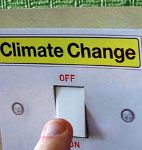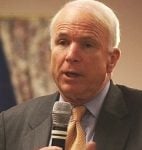The debate on global warming in Congress, the United States’ national legislature, has shifted dramatically over the last few years. Ten years ago, Congress was unconvinced of the science and suspicious of international cooperation. In 1997, for example, the US Senate passed a resolution, known as the Byrd-Hagel resolution, which rejected the Clinton administration’s negotiations on the Kyoto Protocol. For too long, the Senate’s key environment committee was controlled by James Inhofe, a climate-change denier, who denounced global warming as the “greatest hoax ever perpetrated on the American people.”
But the congressional debate began to change earlier this decade, reflecting the strength of climate science, growing pressure for action at the state and local level and rising support for action in the US business community. In 2003, senator John McCain, now a candidate for president, introduced the first legislation to cap and reduce the country’s greenhouse-gas emissions. In 2005, the Senate adopted a new resolution (the Bingaman-Specter resolution) that effectively replaced the Senate’s rejection of action in 1997. The new resolution declared that the US needs to take the lead by adopting mandatory legislation to cap and reduce emissions, and that this step would help promote comparable action by the United States’ key trading partners.
Steadily growing public concern, coupled with the change in party control – from Republicans to Democrats – in the 2006 congressional election, has led to new momentum for federal global warming legislation in the current Congress. The findings of the Intergovernmental Panel on Climate Change (IPCC) are broadly accepted. The urgency of action has been underscored by extreme weather events such as Hurricane Katrina and widespread droughts, as well as large-scale climate impacts such as the melting of Arctic Sea ice that are unfolding at surprising speed. The question is no longer “if” global warming is happening, but “what” the country’s highest legislative body should do about it.
A major milestone was the Senate environment committee’s approval last December of the Climate Security Act (S. 2191) sponsored by senators Joe Lieberman and John Warner. This comprehensive global warming bill is expected to come to a vote in the full Senate as early as June 2008.
The bill would adopt an emissions trading system, known as a cap-and-trade system, with additional policies that together would reduce US emissions by 20% or more by 2020 and up to two-thirds by 2050, according to a joint analysis by the Natural Resources Defense Council (NRDC) and the World Resources Institute.
As reported by the Senate committee, the bill would:
• Create a national emissions tracking and auditing system.
• Create a cap-and-trade system run by the Environmental Protection Agency, steadily reducing emissions by nearly 2% per year between 2012 and 2050.
• Allow limited use of emissions “offsets,” which are carbon reduction credits from US entities not covered by the cap and trade system. (An individual power plant or industrial source could meet its obligations with up to 15% offsets.)
• Allow purchases of credits from foreign carbon markets that meet certain criteria.
• Use emissions trading, banking and borrowing to help manage costs while maintaining the integrity of the emissions cap.
The bill would also dedicate billions of dollars (through the allocation or auction of emissions allowances) to a variety of public purposes:
• Encouraging deployment of energy efficient and renewable energy technologies.
• Developing low-carbon energy sources, including advanced coal with carbon capture and storage.
• Accelerating deployment of cleaner vehicles and fuels.
• Promoting energy-efficient building codes and expanded public transportation.
• Minimising transitional burdens for affected industries and communities.
• Supporting domestic and international adaptation activities and international efforts to reduce deforestation.
The Senate bill is not perfect. It could demand deeper cuts in emissions and make greater investments in low-carbon technologies in the US and abroad. But, if passed, it would represent a watershed: the moment when the US finally turns the corner on confronting climate change.
In the US House of Representatives, progress is also dramatic. Early in this Congress, the Speaker of the House, Nancy Pelosi, created a new committee dedicated to raising awareness on global warming and clean energy. The powerful chair of the House Energy and Commerce committee, representative John Dingell, has turned his attention to global warming after brokering the first increase in vehicle fuel efficiency standards in close to 30 years. The House Energy and Commerce committee has produced white papers committing to reduce US emissions by 60% to 80% by 2050 and exploring various policies that would make up a federal global warming program. His staff has begun drafting mandatory cap and trade legislation.
Both the Senate and House are grappling with competitiveness concerns raised by certain energy-intensive industries, which assert that US legislation could place them at a disadvantage compared to international competitors. Several proposals have been advanced to address this problem, including the possibility, after a period of time allowing for international negotiations, of requiring importers of certain products (such as steel or cement) to purchase emissions allowances on entry to the US. These provisions would not come into effect if there is sufficient progress through international negotiations towards nationally appropriate actions in other countries.
Will strong global warming legislation make it through Congress and reach the president’s desk this year? The urgency of the climate crisis means we have no choice but to work as hard as we can to make that happen. It is expected that the full Senate will debate and vote on the bill in June. In any event, progress made in Congress this year will contribute to faster action with the new Congress and when the new US president takes office in January 2009.
It is clear that a change in US policy is coming. President Bush still opposes mandatory limits on US emissions: in April, he actually proposed to let them keep growing until 2025. But the three leading candidates to replace him (senator McCain on the Republican side and Senators Hillary Clinton and Barack Obama on the Democratic side) all support mandatory legislation to cap US carbon emissions now and reduce them steadily in the years to come. Who ever wins, the next president will make global warming legislation a top priority in the first year of the new administration. The next president will also re-engage the United States, after an eight-year absence, in the international negotiations to reach a global climate agreement for 2012 and beyond, which began last year in Bali and will culminate in Copenhagen in late 2009.
After years of inaction, the US can hardly claim to be a global leader in carbon reduction. But when the Congress enacts national legislation to cap and reduce climate-warming pollution and when a new president takes office, the country will once more be a responsible partner with other governments in the global effort to prevent climate catastrophe.
Frances Beinecke is the president of the Natural Resources Defense Council




